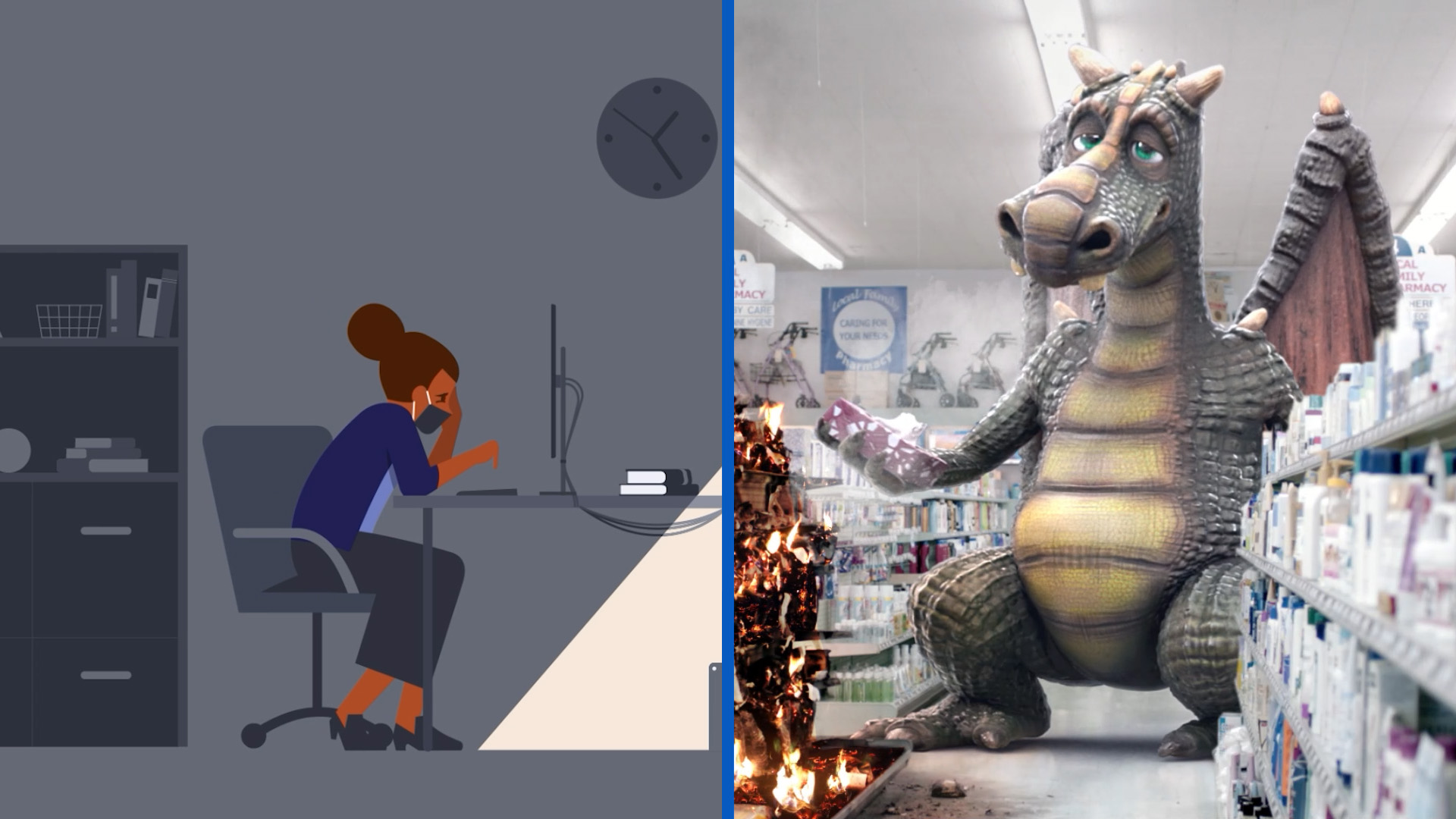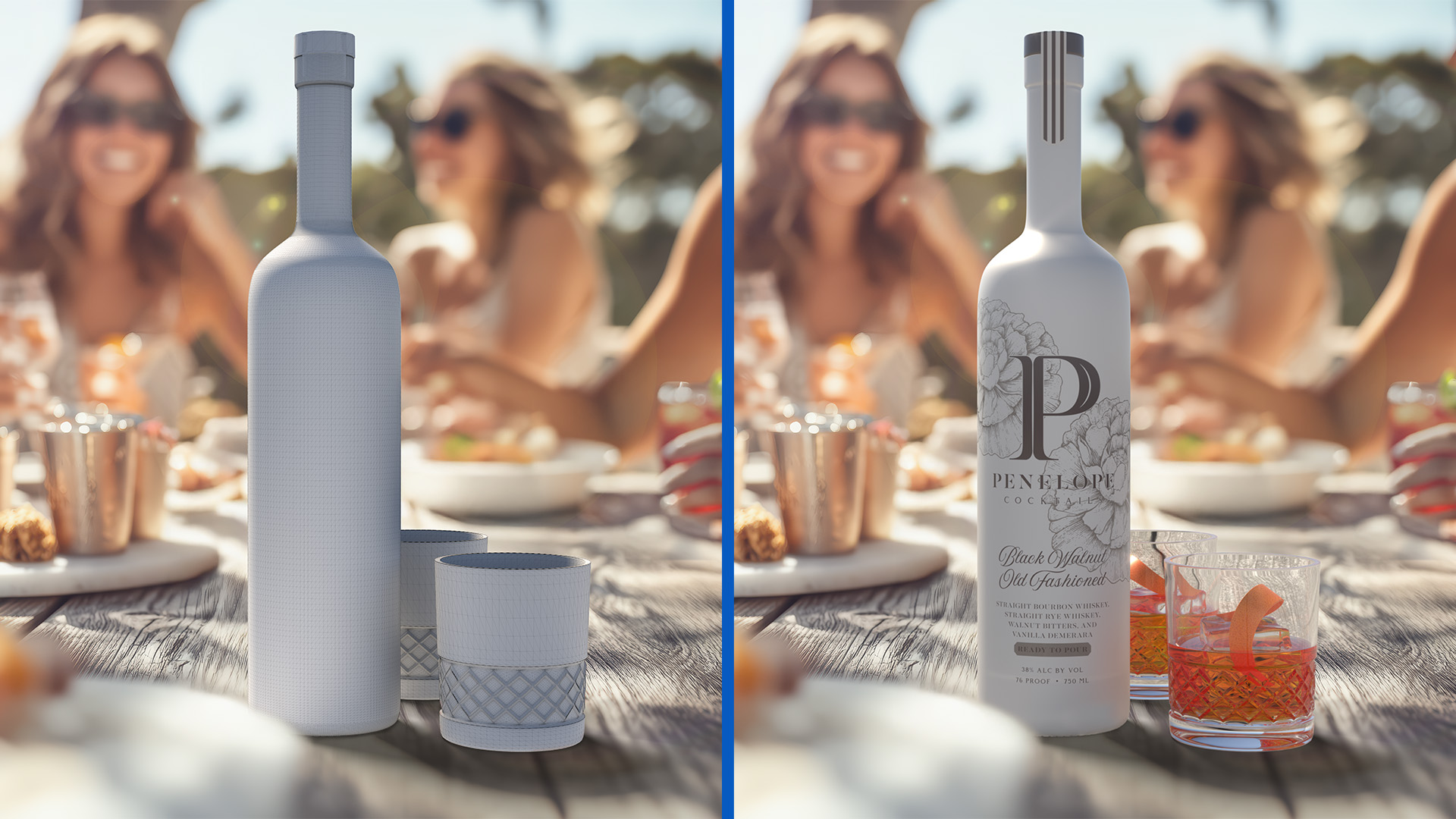Exploring the Latest Trends in Commercial Video Production

Exploring the Latest Trends in Commercial Video Production
In 2025, commercial video has been shaped by three converging forces: budgets shifting toward digital video and connected TV, vertical, short-form storytelling, and creators and AI pushing production speed into overdrive. U.S. digital video spending continued to outpace total media, increasing 18% in 2024 and projected to hit approximately $72B by the end of 2025.
At the same time, platforms are changing the landscape. YouTube Shorts now reaches billions of logged-in users with roughly 70B daily views, LinkedIn launched full-screen vertical “First Impression Ads,” and TikTok’s U.S. status remains in flux under a December 16, 2025 enforcement deadline, pushing marketers to diversify deliverables from one master shoot. Connected TV (CTV) is also a core buy, nearing one-third of total TV ad spend. As streaming consolidates cross-screen viewing, 9:16 masters and silent-autoplay hooks are essential for success.
In this article, the video production experts at Aligned Media explore the latest trends in commercial video production and how you can leverage them to create impactful content that resonates with your target audience.
1. AI Is Moving On-Set and Into the Post-Production Room
AI has moved from "cool demo" to formal line item in commercial schedules. IAB’s 2025 report found that 86-90% of video buyers are using or plan to use generative AI, with about half already building ads with it. For production teams, that means formally scoping AI for speed, scale, and versioning instead of using it as a last-minute trick.
Adobe Premiere Pro and DaVinci Resolve now include robust AI assistant features, including text-based edits, enhanced speech, object removal, multicam/speaker detection, and generative clip extension. This makes rough-cuts and polish significantly faster, transforming the production process.
Generative video is also maturing, but most brand work still blends it with live-action shots for quality and continuity. Google’s Veo 3 now supports vertical and comes with lower per-second pricing, making social-first prototyping cheaper, while Sora’s update notes still flag realism limits on physics and complex, long actions, providing useful context for where GenAI fits today.
2. Vertical-First, Short-Form Deliverables Are Essential for All Industries
Short, vertical video isn’t just for consumer brands anymore; it’s now the default packaging for reaching working professionals, too. LinkedIn has formally leaned in, launching their full-screen vertical video format and expanded CTV placements in June 2025. TechCrunch also reported a 36% year-over-year jump in LinkedIn video uploads, underscoring why marketers should plan 9:16 cuts up front instead of treating them as afterthoughts.
On the platform side, YouTube Shorts has the scale to justify vertical-first production on its own, with Google citing 2B+ logged-in monthly viewers and nearly 70B daily views, evidence that short-form consumption continues to accelerate. Shorts viewing on connected TVs also more than doubled in 2023, which is why YouTube has been pushing Shorts ad products into the living-room context. For producers, that means framing for mobile while leaving enough resolution for clean punch-ins on larger screens.
The implications are straightforward: storyboard your 9:16 master first, then derive square and 16:9 alternates. Design opening visuals and on-screen copy to communicate without sound, as most feed autoplay silently. Finally, ship captioned files and safe-area graphics for each placement.
3. Cloud-Native Production is the Default
Cloud workflows have moved from “nice to have”: to the baseline for commercial shoots. Camera-to-Cloud (C2C) now ships across a wide ecosystem as Frame.io’s V4 platform bakes in real-time ingest and review with a C2C roster spanning native and accessory integrations with RED, Canon, Nikon, Leica, Fujifilm, Panasonic, LUMIX, Atomos, and more. This means more proxies (and sometimes originals) are available to editors and stakeholders minutes after capture, leading to fewer resets on set and faster buy-ins between takes.
Post-production is equally cloud-first. DaVinci Resolve 20 and Blackmagic Cloud allow multiple collaborators to work on the same timeline, while Blackmagic Camera records a proxy alongside camera originals and can auto-upload that proxy to the cloud for immediate editing. For teams that prefer external recorders, Atomos’ C2C devices push progressive uploads while a take is still rolling, then hand off to Frame.io (or other clouds) for instant review.
You’ll also see “immersive” deliverables creeping inter enterprise briefs. Apple has opened Apple Immersive Video workflows to third-party creators, with specs like MV-HEVC at 4320×4320 per eye at 90 fps. Blackmagic’s URSE Cine Immersive and Resolve support also show a maturing, end-to-end pipeline for Vision Pro experiences. For most brands it’s still experimental, but the capture-to-post path is real.
4. The Rise of Creator Collaborations and UGC
Creator content has graduated from experiment to advertising strategy, with multiple surveys showing most brands maintaining or increasing spend on user-generated content (UGC) in 2025 and showing a clear tilt toward micro/mid-tier creators for a better engagement-to-cost ratio. In B2B specifically, creators are now a mainstream tactic. LinkedIn reports that over half of B2B marketers are partnering with creators, and audience research shows strong trust and monthly engagement with industry voices.
What’s working is a blend: keep the intimacy and immediacy of UGC with direct-to-camera hooks, lived-in locations, and lo-fi textures, but capture with pro craft (sound, lighting, and continuity) and package deliverables for every placement. Many advertisers also run creator licensing, where the brand buys media under the creator’s handle to preserve social proof while controlling targeting and iterations.
5. Brand Film Meets Performance with CTV and Shoppable Video
Marketers are steering more budget into CTV as digital video expands and ad-supported streaming scales, with IAB’s 2025 Video Ad Spend Report showing U.S. digital video climbing toward nearly $72B in 2025. When Amazon made Prime Video ad-supported by default in early 2024, it instantly created one of the largest CTV ad audiences.
What makes 2025 different is how shoppable those impressions are. YouTube rolled out an interactive shopping format for TV screens, including product feeds that appear alongside ads, remote-navigable browsing, and QR handoffs. Roku’s Action Ads now tie directly into Shopify catalogs and Roku Pay, while NBCUniversal has been leaning into QR-driven “ShoppableTV” with retail collaborations that blend linear, streaming, and on-screen commerce prompts.
For scannable or interactive CTV, design end-cards that scan cleanly on a sofa-distance screen. This includes keeping the QR large and on-screen for the full duration, anchor it in a fixed position with a brief instruction, and consider the viewing distance rule-of-thumb. Many marketers also recommend 15+ second ad lengths when using QR codes so viewers have time to act.
Recommendations for Creating Your Next Commercial
It’s best to treat the trends we’ve discussed as an operating system, not a checklist. Here are easy ways you can elevate your commercial video production strategies from pre-production through delivery:
- Storyboard 9:16 First: Map every deliverable to its platform (Shorts, Reels, LinkedIn vertical, CTV) and plan square/16:9 alternates up front.
- Define an AI-Assist Track: Scope where AI helps and where live action remains essential, ensuring to outline rights and disclosure requirements.
- Capture for Multi-Aspect: Protect framelines for 9:16, 1:1, and 16:9, write a 2-second hook, and design text/captions to communicate without sound.
- Turn On Camera-to-Cloud: Record proxies alongside originals, preflight bandwidth, and set a same-day rough-cut milestone to reduce risk.
- Make CTV Shoppable and Scannable: Build high-contrast, static end-cards with clear CTAs, size QR codes for sofa distance or include remote-based interactions, and pair shoppable commercials with fast landing pages.
- Formalize Creator Collaborations: Prioritize fit over follower count, lock usage rights, and include FTC-compliant disclosures.
- Align KPIs and Test Before You Shoot: For vertical/social, track hook hold, CPV, CTR, and site behavior. For CTV, measure second-screen conversions and incremental lift alongside reach.
How Aligned Media Applies the Latest Commercial Video Production Trends
At Aligned Media, we bring strategy, creative, and execution under one roof, building a production plan around the channels that will actually move the needle for your campaign. Our commercial video production runs end-to-end and every project starts with aligning on outcomes, audiences, and where your commercial will live.
In pre-production, we storyboard vertical-first and plan cut-downs for every placement before we roll camera. That means writing platform-specific hooks, protecting framelines for 9:16/1:1/16:9, and scoping AI assists where they add speed (look-dev, cleanup, versions) while keeping live action for performance and usage clarity.
On set, we scale crews to match the brief, shooting on location, in studio, across the Midwest or globally and using near-real-time stakeholder review with camera-to-cloud so editors can start day-one assemblies and reduce reshoot risk. When timelines, weather, or travel make it smarter, we’ll recommend hybrid virtual production to compress schedules and keep creative control.
In post, we design for performance: polished edits with motion graphics and VO where needed, captioned masters by default, localized versions when appropriate, and platform-native end-cards (including QR/scannable CTV variants). For provenance and partner trust, we can attach Content Credentials (C2PA) to final masters and document any synthetic elements in the wrap.
Partner with Aligned Media to Create Commercials That Move the Needle
Commercial video in 2025 and beyond rewards teams that plan for platforms, design for speed, and still sweat the craft. Vertical-first framing and short-form storytelling meet camera-to-cloud workflows for faster approvals, AI assists accelerate cleanup and localization, and creator collaborations add authenticity. The producers who align the latest trends with accessibility, performance KPIs, and targeted strategy will create campaigns that look premium and drive more conversions.
Ready to create commercials that resonate with your audience? Connect with Aligned Media to turn these trends into a plan for your brand.
Other Blog Posts
Say Hi
We hope you’re as excited to get started on your project as we are. From short-form social media videos like Instagram Reels, TikTok videos, and YouTube Shorts to long-form content like high-end documentaries, we want to bring your creative vision to life.
As a full-service video production company, we are equipped to work with you during every single step of the video production process. This ensures a fast turnaround time and lower costs since no outsourcing to third-party content creators or video editing agencies is required.
When you want high-quality video content from professional editors who are personally invested in your project, drop us a line or stop by for a chat. Whether it’s a quick brainstorming session or a longer strategy meeting with our dedicated video editors, we’re always ready to create something amazing at pricing that works for you.
Let’s make your next video project one for the books. Contact Aligned Media today to get started bringing your vision to life with our personalized video editing services!

